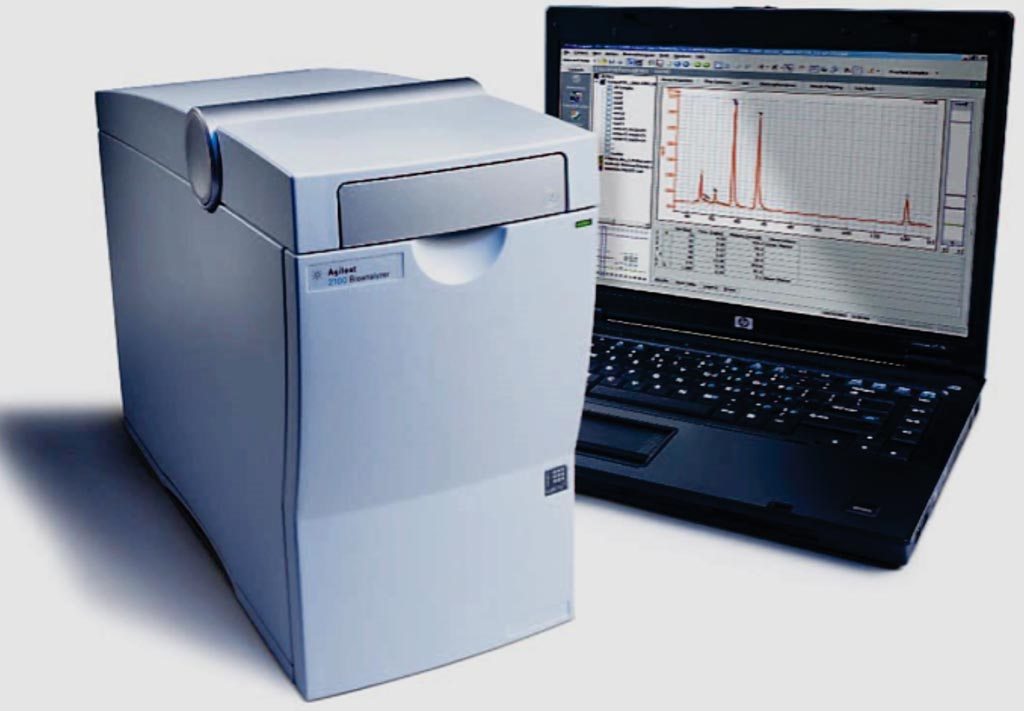Viral Marker Predicts Flu Severity in Infected Patients
By LabMedica International staff writers
Posted on 01 Nov 2017
Influenza A viruses are the causative agents of annual epidemics, sporadic zoonotic outbreaks and occasionally pandemics. Worldwide, acute respiratory infections caused by influenza A viruses continue to be one of the main causes of acute illness and death.Posted on 01 Nov 2017
Influenza is particularly dangerous for infants, the elderly, and people with underlying medical issues, but otherwise-healthy people sometimes experience severe infection, too. Markers of severity have been found for specific strains, but a general marker that applies to multiple strains would be more useful to inform treatment and policy.

Image: The Agilent 2100 Bioanalyzer is a microfluidics-based platform for sizing, quantification and quality control of DNA, RNA, proteins and cells (Photo courtesy of CORELAB).
A team of scientists at the Spanish National Center for Biotechnology (Madrid, Spain) included in their study patients in a severe/fatal cohort who were influenza A(H1N1)pdm09 confirmed cases, aged over four and less than 65 years old, admitted to intensive care unit (ICU) and with the information related to risk factors reflected in their clinical history. Those patients who developed highly severe disease did not display any comorbidities associated to severe influenza A virus infection, and deceased patients presented some comorbid conditions. Mild patients were influenza A(H1N1)pdm09 confirmed cases, aged over four and less than 65 years old, who developed mild disease and were monitored by sentinel medical centers.
The team focused on defective viral genomes (DVGs), which consist of pieces of viral RNA with missing genetic information, which are found in multiple strains of influenza virus. To test whether DVGs could serve as a general marker of influenza severity, they infected both mice and human tissue cell cultures with different strains of influenza A H1N1 virus, the subtype responsible for influenza pandemics.
The team also analyzed the genomes of viruses isolated from respiratory samples taken from people who experienced severe infection or death during the 2009 "swine flu" pandemic or later "swine flu-like" seasons. The identity of rescued mutant viruses was ascertained by sequencing of DNAs derived from the polymerase genes PA and PB2 RNA segments by reverse transcription-PCR (RT-PCR) amplification. Quality and quantity of each RNA preparation was monitored using the Agilent 2100 Bioanalyzer. Flow cytometric analysis was performed on a cytometer LSR II.
The team found that the H1N1 strain that caused severe symptoms had significantly less DVG accumulation than influenza A strains sampled from people who experienced only mild symptoms. Together, these results suggest that low levels of DVGs may indicate greater risk of severe disease in patients infected with influenza A virus. With further studies, these findings could help predict influenza severity, guide patient treatment, and inform influenza prevention strategies. The study was published on October 12, 2017, in the journal Public Library of Sciences Pathogens.
Related Links:
Spanish National Center for Biotechnology













